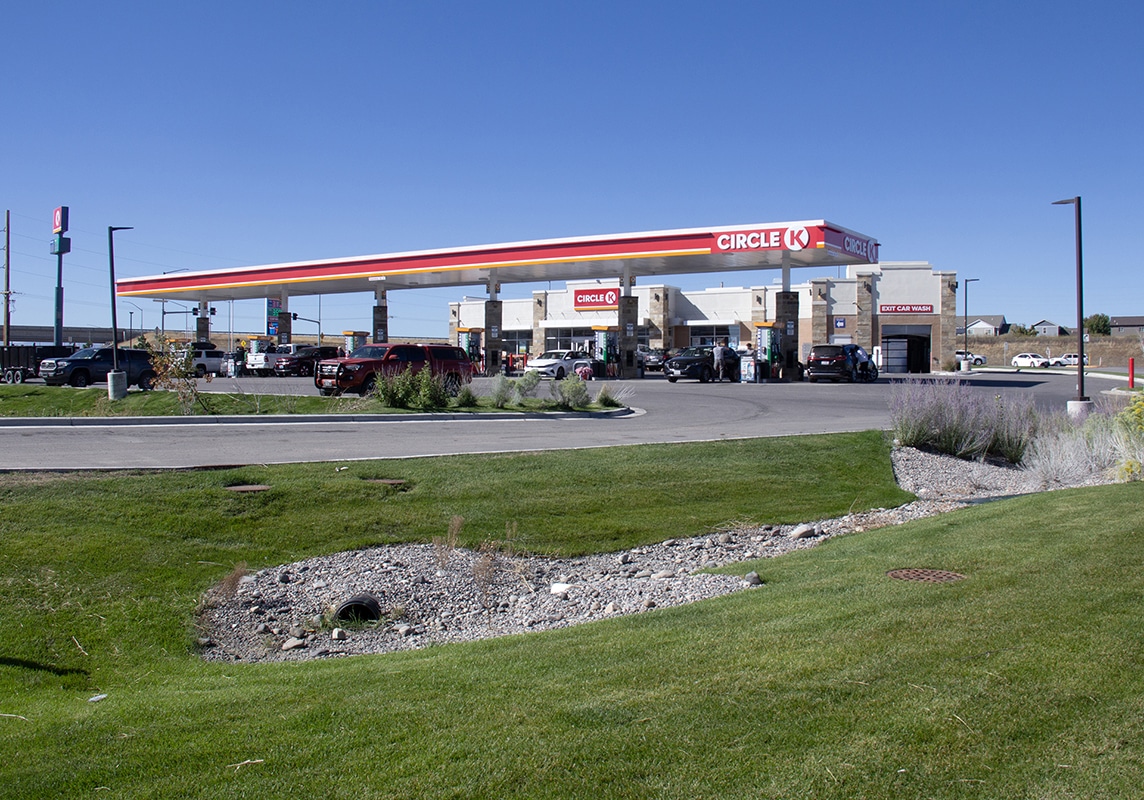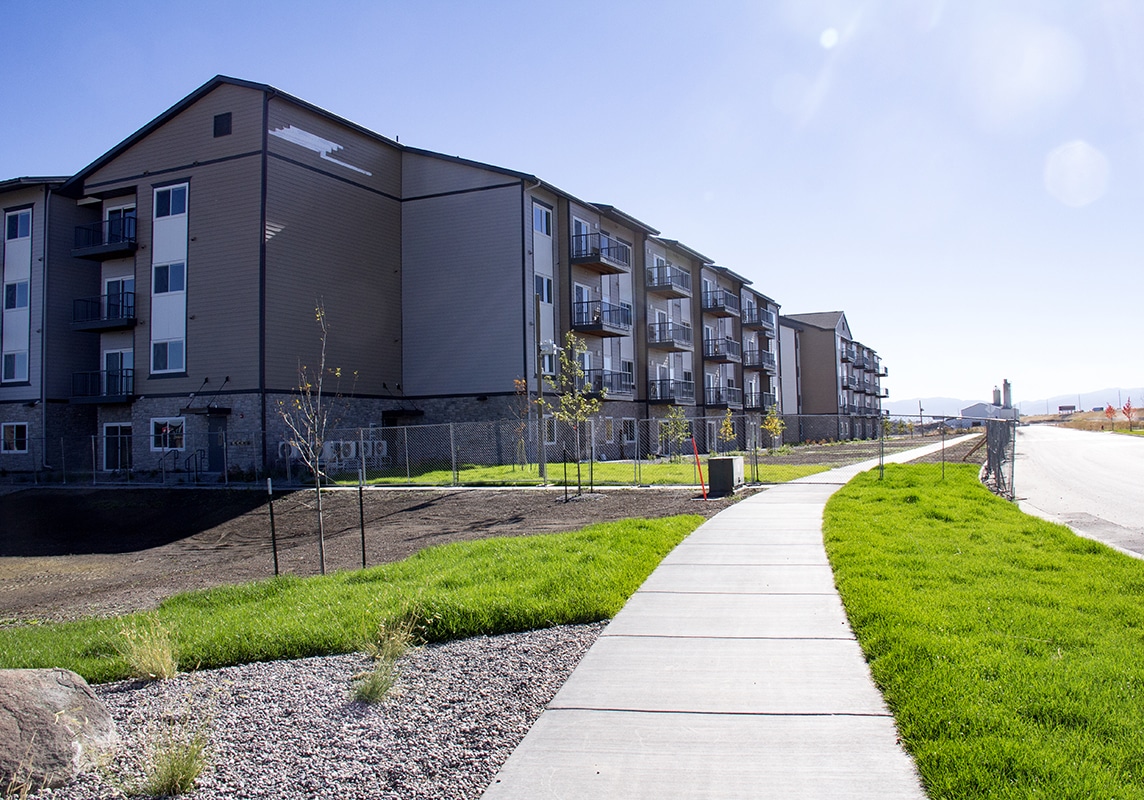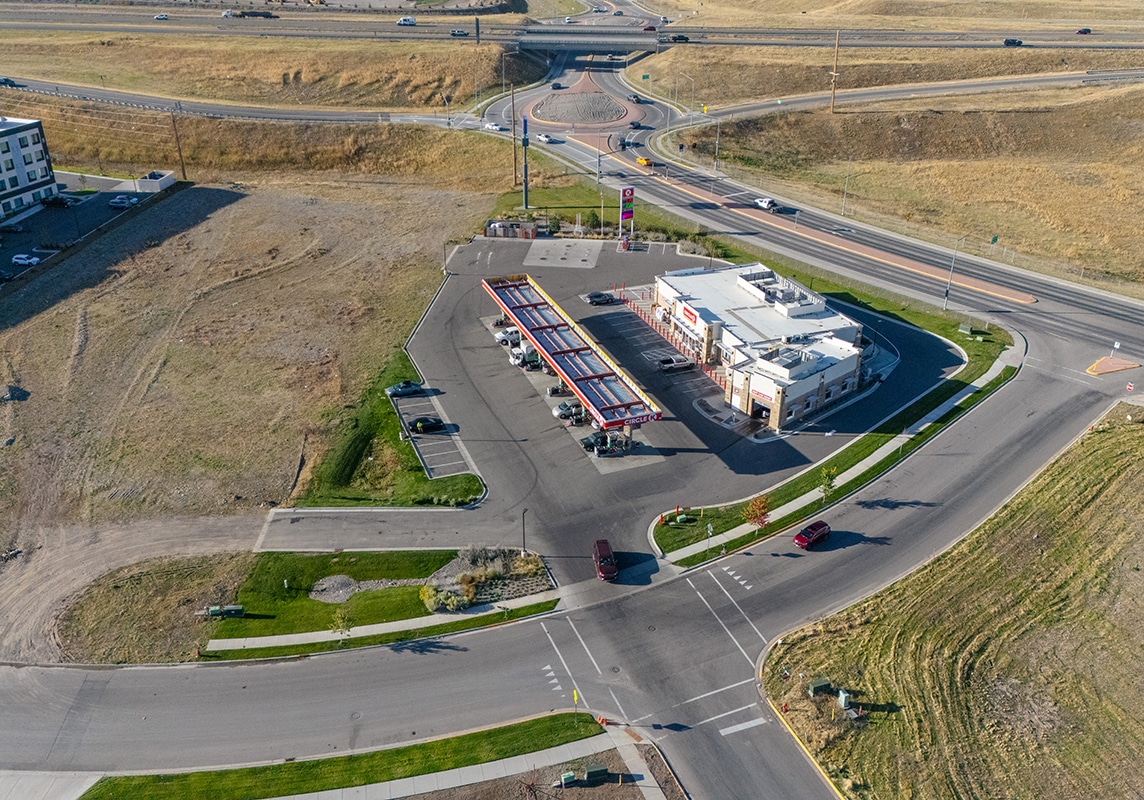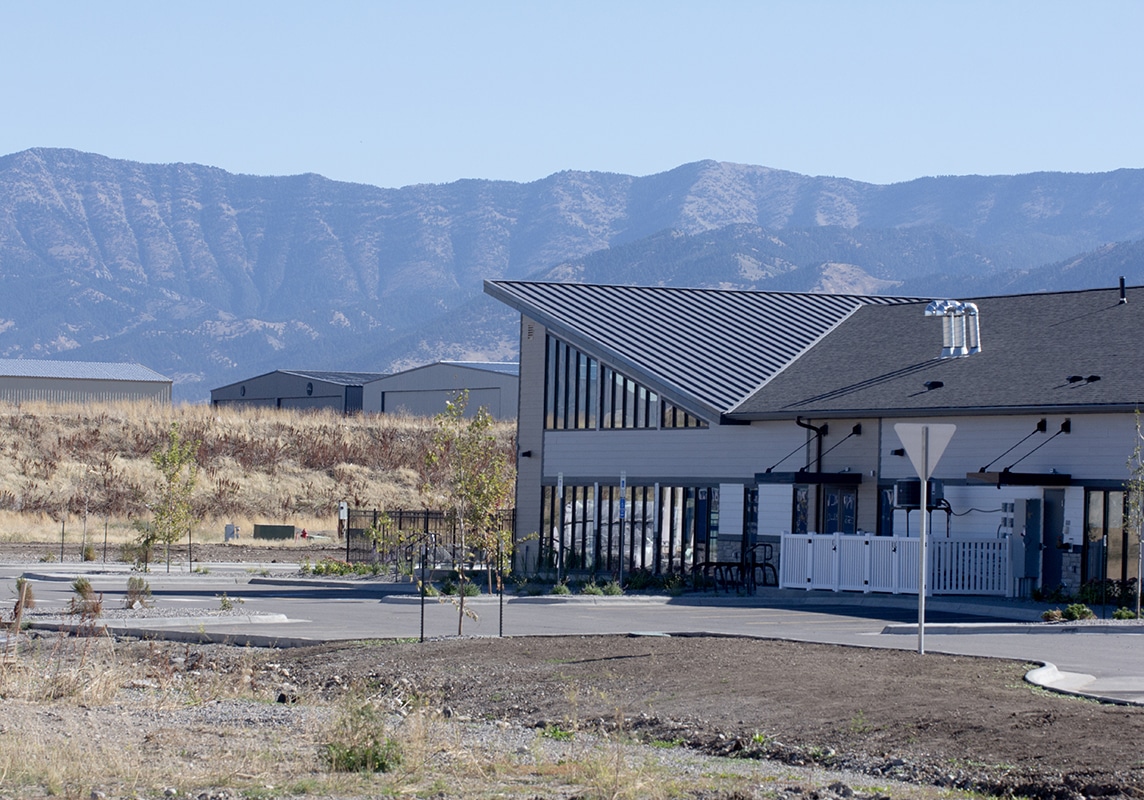
Bozeman Yellowstone Airport Plaza
A New Hub for Travelers and Residents
The Yellowstone Airport Plaza is in Belgrade—home to Montana’s largest and busiest airport and near Bozeman, one of the state’s fastest-growing communities. It is near several outdoor recreation areas and boasts many residential options and a vibrant business community.
But that’s not quite enough to meet their rapidly increasing demands.
Charter Realty & Development hired Morrison-Maierle to help them redevelop a 54-acre gravel pit—known as the Figgins Pit—next to the East Belgrade Interchange and the entrance of the Bozeman Yellowstone International Airport (BYIA). Turning the former gravel pit into the Yellowstone Airport Plaza Subdivision has significantly helped Belgrade meet its growing commercial and residential needs. Morrison-Maierle collaborated with Bechtle Architects to develop a Master Plan for the Yellowstone Airport Plaza for commercial and residential development. This comprehensive design includes safe movement of pedestrians, on- and off-street parking, site access, and a pedestrian and vehicular circulation system.
The Yellowstone Airport Plaza subdivision is a significant benefit and improvement for travelers, especially those who drive from Helena and Butte specifically to fly in and out of BYIA. Before the subdivision, there were no nearby conveniences, and people would have to drive another 10 miles into Bozeman for services and amenities. Now, they can access those amenities, including hotels, restaurants, and gas stations closer to the Belgrade area.
-
Civil
-
Entitlement – zoning, subdivision
-
Regulatory agency management
-
Stormwater
-
Survey
-
Water distribution
-
Water-wastewater
Updating and Developing Brownfield Areas
The Yellowstone Airport Plaza project sits on the Figgins Pit, a previous gravel mining operation. In 2015, with the addition of the I-90 interchange, that area became a prime target for commercial and residential development.
The project was divided into five zones: retail and restaurant, shopping, industrial/commercial, mixed-use/multi-family residential, and hospitality. Charter hired Morrison-Maierle to perform various studies: groundwater, stormwater, traffic impact, water and sewer infrastructure analysis, weed management plans, and environmental reports. These reports constituted the bulk of the preliminary plat application submitted to the City of Belgrade.
Because the site was a former gravel pit, a large amount of fill was required to grade the property to match Airway Boulevard. The property had steep north, south, and west perimeter slopes. The interior of the property is relatively flat, but the floor of the original site sat down roughly 35 feet below the ground level of the surrounding properties.
Some places needed over 16-24 vertical feet of fill to elevate the area. Knife River filled the area with a conglomeration of materials brought in and compacted to redevelop the site. To prepare the space, the design called for approximately 400,000 CY of fill and a new lift station to connect to the City of Belgrade’s wastewater collection system.
Most developers identify potential projects in greenfield areas—places entirely new to development and where the surroundings are ready for infrastructure. As a former gravel pit, the Yellowstone Airport Plaza falls into the brownfield site category—a site that’s been repurposed for commercial and industrial businesses to move in.
Brownfields tend to present more significant challenges to developers because of pre-existing site disturbances. The Yellowstone Airport Plaza project provides the framework for future development projects that want to retool land that is no longer used for its original purpose.


Airport Considerations
As BYIA is now one of the fastest-growing airports in the country, the area needs services that cater to its more than 1.5 million annual passengers, including hotels to house passengers. According to Charter, Morrison-Maierle’s client, typically, there are 20-30 hotels around an airport of BYIA’s size. Before this development was designed and built, no hotels had been built in Belgrade or near the airport area for more than seven years.
Since the cross-wind runway at the airport is directly off the end of the Yellowstone Airport Plaza—and, according to the FAA, roughly 70-80% of crashes at airports happen within two miles of the runway—we had to consider what to place in the glide path. We avoided placing residential or commercial buildings and instead chose lower-risk options like parking.
Widespread Community Benefits
Mixed-use developments, like the Yellowstone Airport Plaza, often create a better balance between jobs and housing. Because people can live closer to work and amenities, we see a reduced reliance on vehicle travel and, consequently, the creation of more livable spaces. This development achieves all these things and includes desperately needed attainable housing in the Belgrade and Bozeman communities.
BYIA will help build the economy and allow locals to work in the Belgrade community. Knife River is also staying in the area—they are moving their gravel pit operations to the south side of I-90. As a result, the Yellowstone Airport Plaza created new jobs without taking away the old ones.
Morrison-Maierle provided the infrastructure needed to help their client create a space that gives them enough flexibility to adjust and accommodate the demands of the nearby economy and city while also making provisions for economically, socially, and ecologically responsible growth.
Learn more about our land development services.
